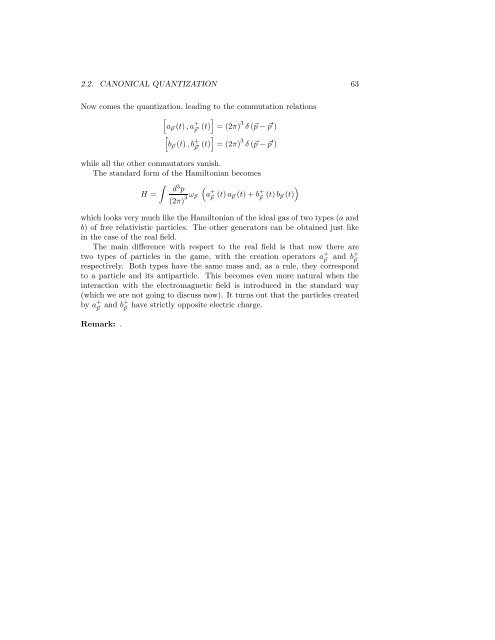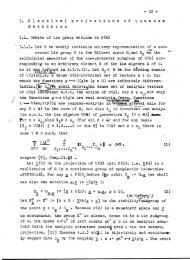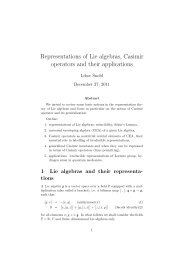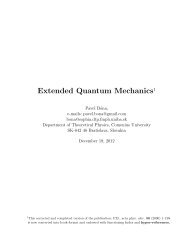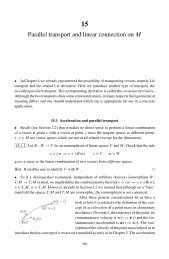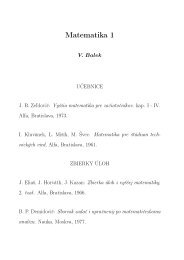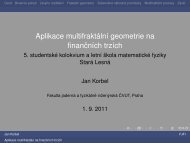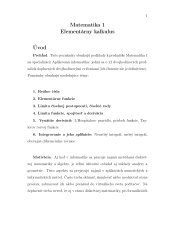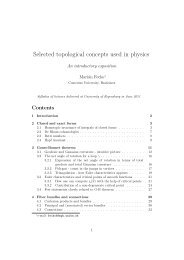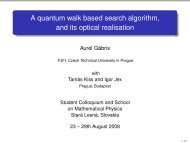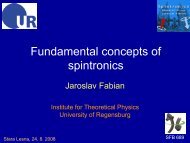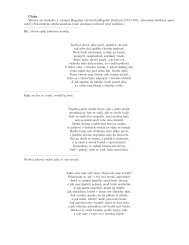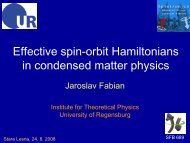Quantum Field Theory I
Quantum Field Theory I
Quantum Field Theory I
Create successful ePaper yourself
Turn your PDF publications into a flip-book with our unique Google optimized e-Paper software.
2.2. CANONICAL QUANTIZATION 63<br />
Now comes the quantization, leading to the commutation relations<br />
[ ]<br />
a ⃗p (t),a + ⃗p<br />
(t) = (2π) 3 δ(⃗p−⃗p ′ )<br />
[<br />
′ ]<br />
b ⃗p (t),b + ⃗p<br />
(t) = (2π) 3 δ(⃗p−⃗p ′ )<br />
′<br />
while all the other commutators vanish.<br />
The standard form of the Hamiltonian becomes<br />
∫<br />
d 3 p<br />
(<br />
)<br />
H =<br />
(2π) 3ω ⃗p a + ⃗p (t)a ⃗p(t)+b + ⃗p (t)b ⃗p(t)<br />
which looks very much like the Hamiltonian of the ideal gas of two types (a and<br />
b) of free relativistic particles. The other generators can be obtained just like<br />
in the case of the real field.<br />
The main difference with respect to the real field is that now there are<br />
two types of particles in the game, with the creation operators a + ⃗p and b+ ⃗p<br />
respectively. Both types have the same mass and, as a rule, they correspond<br />
to a particle and its antiparticle. This becomes even more natural when the<br />
interaction with the electromagnetic field is introduced in the standard way<br />
(which we are not going to discuss now). It turns out that the particles created<br />
by a + ⃗p and b+ ⃗p<br />
have strictly opposite electric charge.<br />
Remark: .


